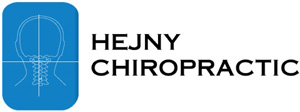 Are you in need of migraine relief in Spring Lake Park? Before anything else, it would help to learn about the condition and its origin.
Are you in need of migraine relief in Spring Lake Park? Before anything else, it would help to learn about the condition and its origin.
Migraines are more than just bad headaches, as many people would like to believe. They are a collection of neurological symptoms that often includes pounding and throbbing head pain. In addition, migraines usually attack only one side of the head. However, some migraine cases also influence both sides of the head. Typically, the duration of migraine attacks last anywhere from 4 to 72 hours and include the following symptoms:
- Visual disturbances
- Dizziness
- Nausea
- Vomiting
- Extreme sensitivity to odor, sound, light, and touch
- Tingling feeling or numbness in the extremities or the face
Remember that everybody will not have the same set of symptoms. A person’s migraine may be completely different from the next individual.
In the past, people believed that migraines were due to the constriction and dilation of blood vessels in the head. As a result, earlier medications for migraines mostly focused on solving this. But today, perception on the origin of migraines has completely changed. Researchers now believe that migraines are neurological disorders. It has more to do with brain chemicals and nerve pathways.
Table of Contents
The Brainstem and Migraines
There are over 300 types of headaches, which also include migraines. Through research, a majority of these headaches, migraines included, were found to be connected to a dysfunction in the neck.
The theory that migraines develop due to blood vessel constriction appeared because of the throbbing nature of migraine headaches. Unfortunately, there was no hard evidence to support this theory.
In 1888, there was a theory that came so close to the truth of what happens when migraines occur. The throbbing nature of migraines got dismissed in favor of having a sensitized brainstem called the trigeminocervical nucleus. Researchers also discovered that headaches, migraines, cluster headaches, and menstrual headaches all show signs of a highly sensitized brainstem.
To learn more about the connection between head and neck injuries and migraines, download our complimentary e-book by clicking the image below.
The Brainstem Functions Similar to an Airplane’s Black Box
Imagine this. The area found between the spinal cord and the brain is like an essential black box on an airplane. All the sensory information goes through this place before it goes to the brain. It records and processes all the data that is going on in the face, the head, the teeth, jaw, blood vessels, and the top three cervical spine joints. In short, the brainstem and the black box are the same. Now imagine, what if something happens to the black box? Wrong signals and wrong commands would endanger the aircraft and passengers, right? The importance of the brainstem and the black box are both very high.
If something happens to the brainstem, then all the signals going to the brain will be distorted and affected. Thus, the brain itself becomes overloaded. The final result would be migraine pain and other disorders.
When the brainstem becomes highly sensitive enough, it can begin to cause issues. If this state of the brainstem continues day after day, then danger arises. As a result, your sensory input would become heightened. In other words, you will experience sensory messages more intensely. Thus, your brain will perceive a small amount of pain as something major, intense pain.
What can affect the brainstem to become super sensitive?
- Dysfunction in the upper neck
- Poor posture
- Stress
- Certain food like (cheese, citrus, dark chocolate, red wine)
One way to have lesser and fewer migraines is by strengthening the neck muscles.
Headaches and Migraines Originate in the Neck
It’s almost unbelievable how migraines and many types of headaches link to a problem in the neck. Studies have revealed that by correcting the root of the problem—misalignment in the neck, allows many patients to find relief. Any care that focuses on the neck results in minimized symptoms and steady improvement. This statement is true for migraines, menstrual headaches, tension headaches, sinus headaches, and many others.
Upper Cervical Chiropractic Care for Migraines
There was a study conducted about 101 patients suffering from migraine headaches. Upon examination, it revealed that all patients had a misalignment in either the C1 or C2 vertebra. All of the patients with migraines received upper cervical chiropractic care. Many found relief after only one or two adjustments. Some reported their migraines went away completely. At the end of the study, all of them saw considerable improvement in their migraine attacks.
Get Migraine Relief in Spring Lake Park, Minnesota
How can upper cervical care give you migraine relief? The atlas (C1) and axis (C2) vertebrae are in the same area as the brainstem. These two bones protect and shield the brainstem.
Unfortunately, if you have a history of trauma or injury to the neck or head, then these vertebrae most likely had shifted out of alignment. In short, instead of protecting the brainstem, the C1 and C2 cause more pressure. As a result, the brainstem sends false signals to the brain. Remember the black box analogy? If all the messages and signs from the body go through the pressured brainstem, then it will affect how the brain reacts to wrong signals.
Here at Hejny Chiropractic in Spring Lake Park MN, we use a gentle and effective method that adjusts any misalignments in your upper cervical area. Once corrected, patients can experience similar results to those in the study mentioned earlier.
Please call our office at 763-230-0116. You can click this contact form to inquire about how you can achieve migraine relief in Spring Lake Park.
To schedule a complimentary consultation with Dr. Hejny, call our Spring Lake Park office at 763-230-0116. You can also click the button below.
 If you are outside of the local area, you can find an Upper Cervical Doctor near you at www.uppercervicalawareness.com.
If you are outside of the local area, you can find an Upper Cervical Doctor near you at www.uppercervicalawareness.com.
